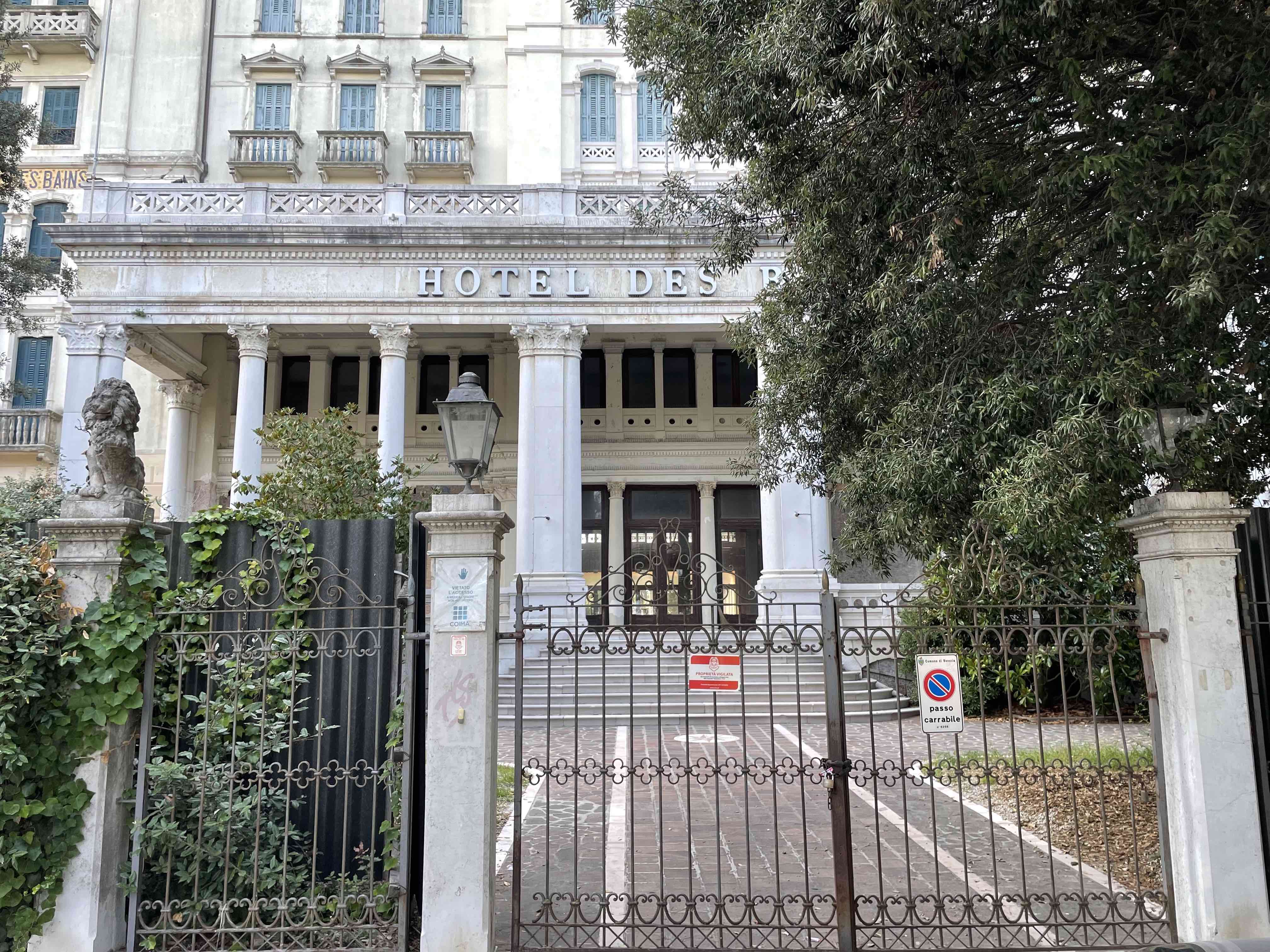
Saluti dal Lido di Venezia!
If you are in Venice in the beginning of September you can’t miss visiting Lido the island that has been hosting the Venice Film Festival since 1932.
These days, the streets of the Lido are swarming with international actors and movie stars, enthusiasts and fans waiting for their favourites to leave in front of the famous Hotel Excelsior. Beyond the charme of this location there are many other parts of the island worth talking about to discover the stories they hold. Today The Platform guides you through some of them.
An 11-kilometre-long island south of Venice, Lido is known as home of the famous film festival and a popular bathing location for Venetians, however that is not the only reason why the island can be worth visiting. A significant part of Lido saw urban development much later than the rest of Venice- in 19th and early 20th centuries when the island became a popular bathing destination for European tourists. As a result, Lido’s more modern architecture provides a contrast with medieval palaces of the main island of Venice. For example, while visiting Lido you can find some very colorful examples of liberty style- the Italian variant of Art Nouveau but of course, this is not the only architectural particularity that can be seen at Lido, to fully immerse into the historical diversity of Lido’s facades we suggest you take a walk through the island’s most distinctive buildings and perhaps with that a walk through time and history.
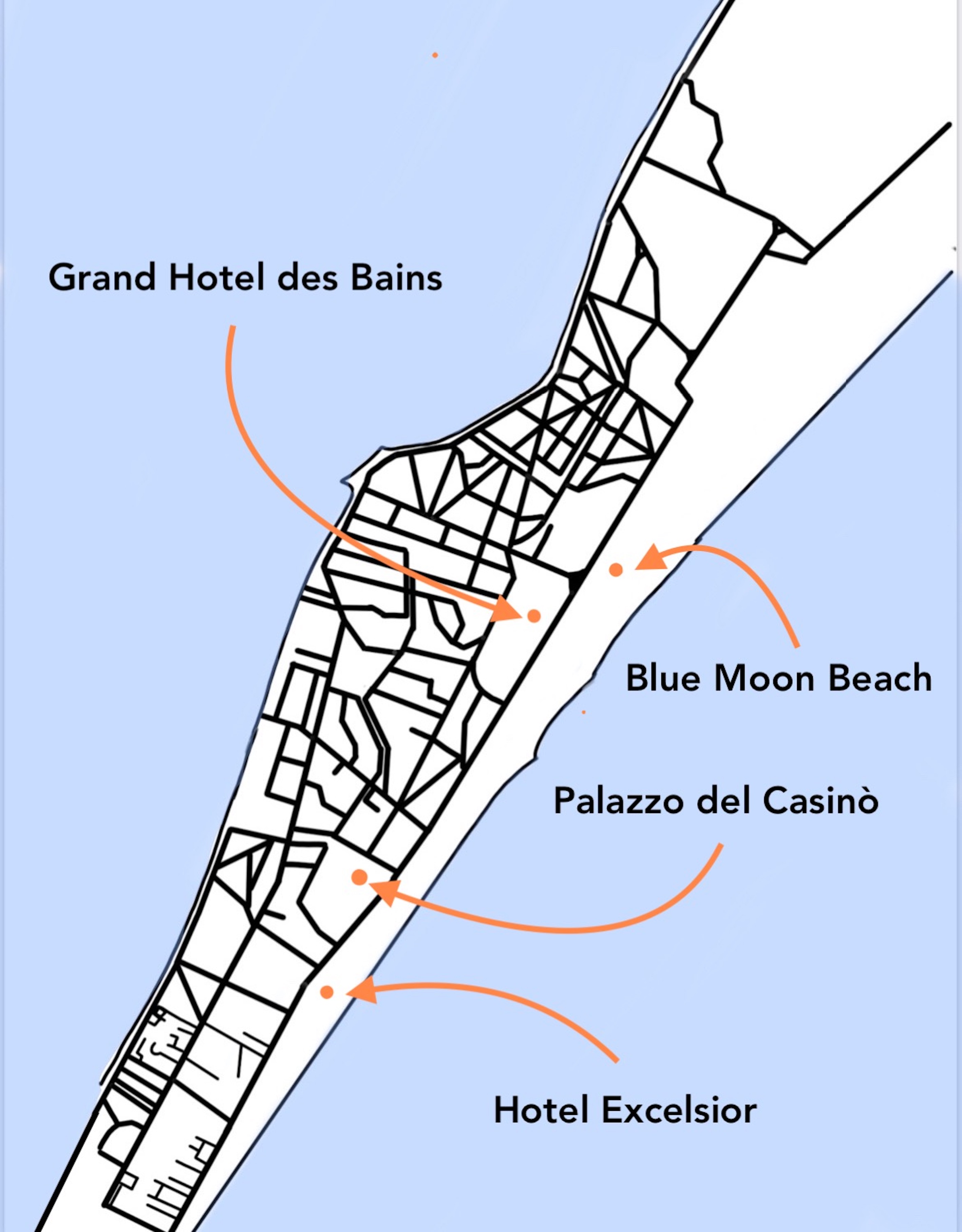
The first stop of our journey is the now abandoned Grand Hotel des Bains, which is a good example of a Liberty Style architecture at Lido. Built in 1900 by Raffaello e Francesco Marsich, this hotel has the central wing with six floors and two lateral wings with five floors and is located in a park with near the Lido beach which added to the feeling of privacy.
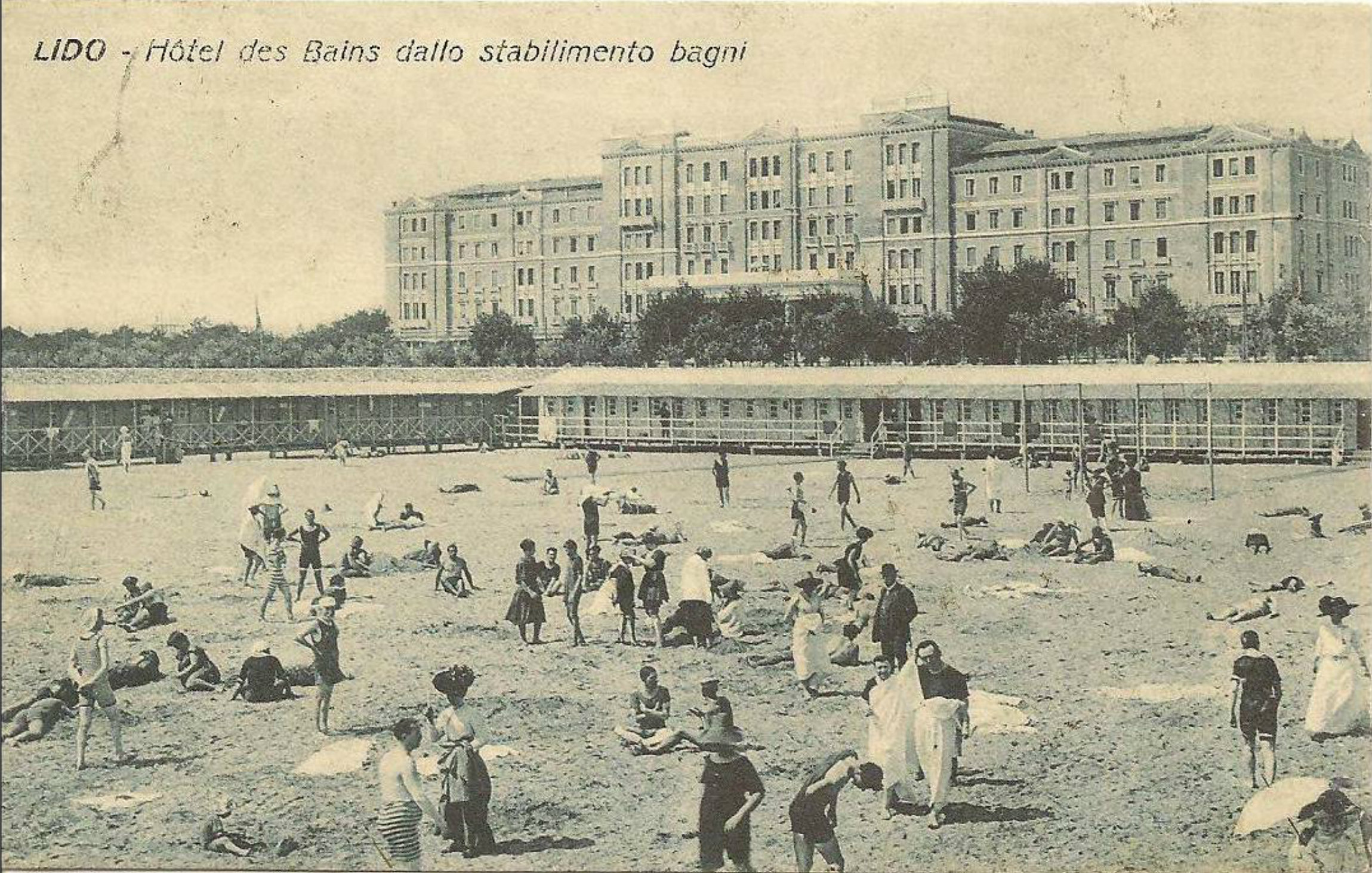
Above and below, vintage postcards via pinterest.com.
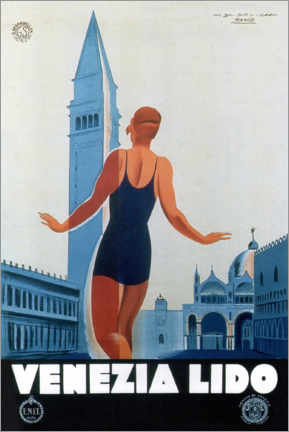
Later, more parts of the hotel were added including external buildings and a large octagonal hall with a balcony and a balustrade. However, the hotel had an ill-fated history full of unfortunate events, first it was closed in 1915 because of the World War I only to be burned down in 1916 in a matter for hours. It was restored in 1919 and in the 1920s went through some remodeling resulting in the outlook we can see today. During the World War II the hotel remained open and was used as recreational site by German officers. At that period des Bains also hosted Adolf Hitler during his visit to Italy, and he has conducted his meeting with Mussolini exactly here.
In 1966 the hotel’s basement was flooded and some of the facilities were destroyed due to a heavy storm, des Bains was closed and left to decay. Since then, it was used as a film set for films like Death in Venice (1971) (Thomas Mann himself stayed in the hotel and the book Death in Venice is actually set in Hotel des Bains) and the Oscar-winning English Patient (1997).
Another unfortunate event happened as recently as 2008, when one more fire broke out in the hotel and in 2010 the hotel was completely closed in order to be transformed into apartments, however the works on that project were suspended. Currently the hotel is owned by an investment fund that has certain projects and the budget for the reconstruction of the historical building in the next few years, so it is likely that the hotel will see the light of the day again.
Above: abandoned Hotel des Bains. Ph. Maria Buzina for VDB



Above and in the photo gallery, pictures by Maria Buzina for VDB and Archivio IUAV (iuav.it)
Going down the Lungomare Guglielmo Marconi is the Blue Moon beach. Extremely popular among Venetians and tourists, this particular beach is interesting because apart from the usual bathing facilities it also accommodates a remarkable construction comprised of a steel pavilion with an elevated walkway. Designed by Giancarlo De Carlo starting from 1995, it was then completed in 2002.
The pavilion has two levels: lower one is comprised of a covered circular square and the upper one is an open square of the same diameter with a steel dome that reminds a spider web. There is a 33-meter-high spiral staircase that starts at the upper level and lead to a small viewpoint that is visible from far away and acts a sort of a lighthouse for the visitors of the beach. The pavilion is accompanied by some service buildings, a café covered by hemisphere domes and a restaurant illuminated by a skylight. A distinctive part of this severe ensemble is a walkway that leads all the way to the sea and ends in another viewpoint. A very industrial-looking construction is surrounded by the water from one side and the tall trees from the other which creates a contrast between man-made and natural Lido.
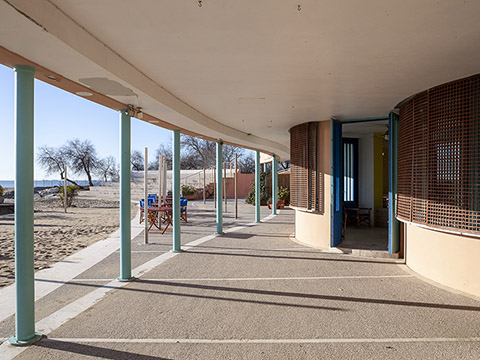

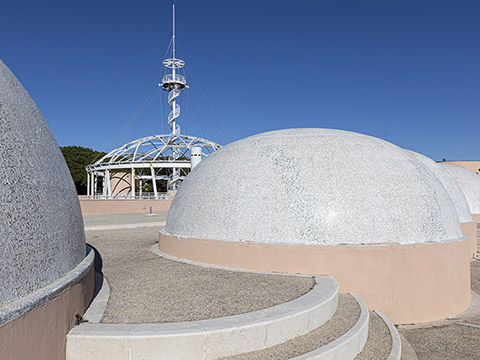

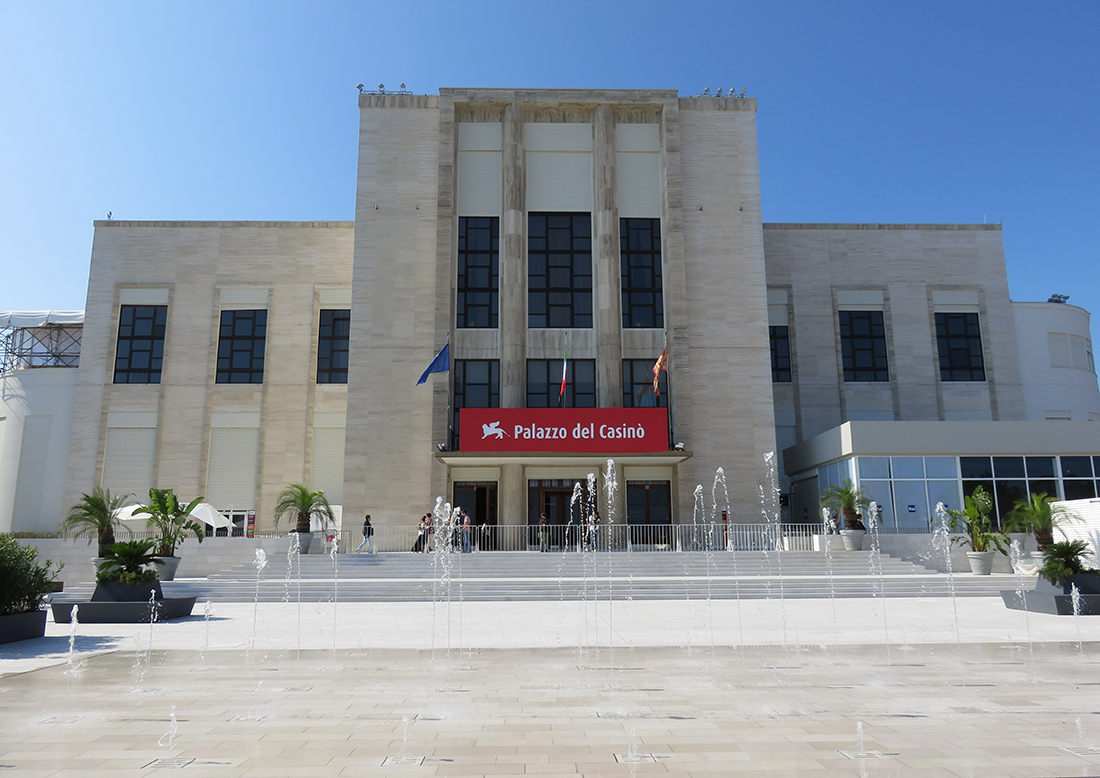
Walking down further you can encounter a great example of Italian 1930s architecture - Palazzo del Casinò built in 1938 by the project of Chief Engineer of the City of Venice at the time Eugenio Miozzi who was also the head of the construction of the Ponte della Libertà that connects the island of Venice with the mainland.
The former summer headquarters of the casinò were built in Rationalist style in line with the general outlook of fascist architecture of the time and was constructed in short 8 months. Minimalistic and ascetic facade is accompanied by monumental interior decorations with marble columns, Murano glass, tall windows, mirrors, curtains, mosaics on the walls and extravagant chandeliers hanging from the ceiling. In the 1990s the Casinò was closed and the building is now used as a venue for the Venice Film Festival.
Picture above via metropolitano.it
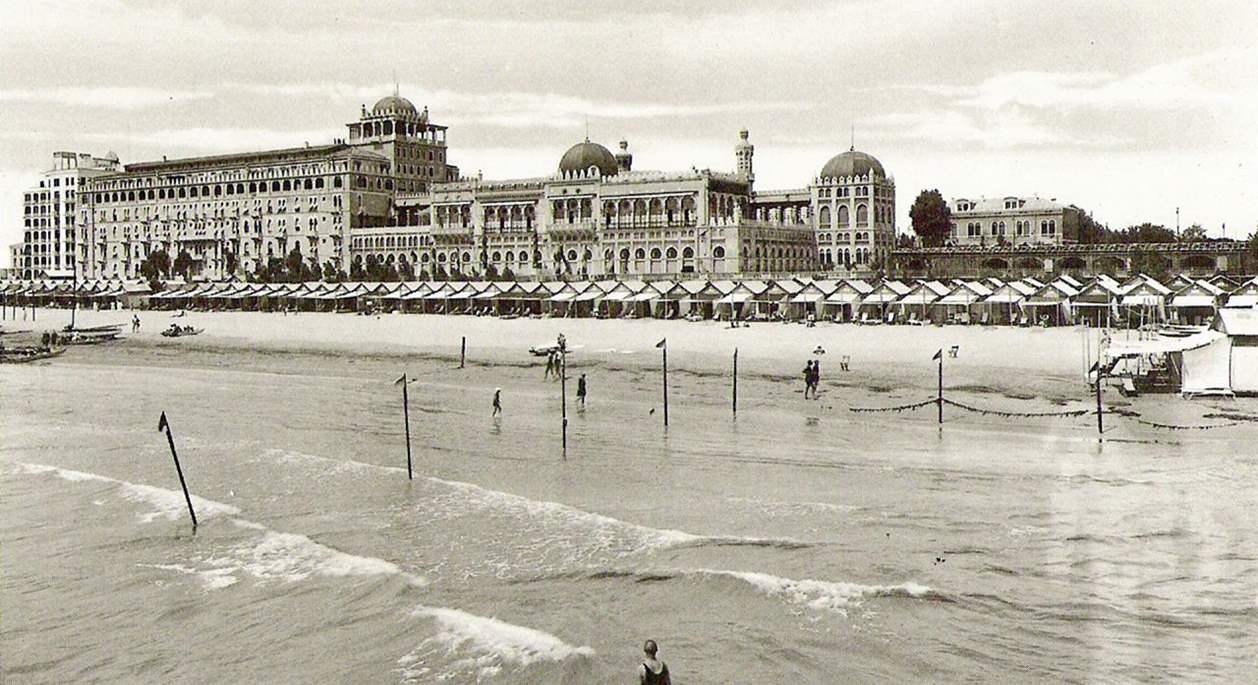
Wrapping up this architectural route is perhaps the most famous hotel of Lido- Hotel Exelsior built by architect Giovanni Sardi in 1908. The hotel with almost 200 rooms hosted such household names as Marlene Dietrich, Winston Churchill, Kirk Douglas and Paul Newman among many others and has been associated with the Venice Film Festival for a long time. The hotel overlooks the seaside and is both impressive from the outside and the inside, where numerous artists has been involved in the decoration.
The hotel was built extremely fast- in only 17 month and was officially opened on July 21 1908. What’s interesting is that the hotel did not always look the way we see it now, the devastating Venice flood of 1966 that left thousands of people without a home has also caused serious damage to the Hotel Exelsior and the entrance hall and internal halls had to be restored. In the beginning of the 20th century the hotel became a social and cultural center hosting the International Film Festival in the thirties and the opening of the summer venue of the Venice Casinò.
Above: Hotel Excelsior via hotelexcelsiorvenezia.com
On the right: Hotel Excelsior, detail via Instagram @lido_etcetera
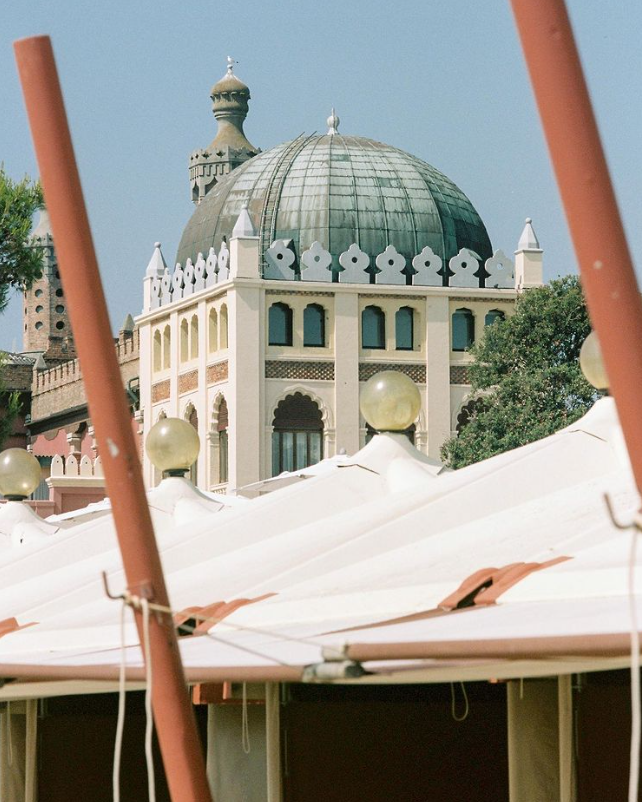
As well as Hotel des Bains, Excelsior was used as a film set, in 1984 the Sala degli Stucchi became the setting for an iconic scene from Sergio Leone’s Once upon a time in America where Robert de Niro and Elizabeth McGovern have a romantic dinner together with the hotel as the backdrop. In 2020 the beach in front of Excelsior was used in a scene of Paolo Sorrentino’s show “The New Pope”, in the scene Jude Law wearing a pair of white swim trunks walks into the sea with the hotel on the background.


Needless to say, Lido has way more hidden architectural gems to discover, but hopefully this guide gave you a good overview of the architectural diversity that can be encountered on Venice defying the expectation that the whole city is only interesting for its medieval palazzos and renaissance art.
Above: Hotel Excelsior. Ph. Florian Fuchs via commons.wikimedia.org
On the left: Hotel Excelsior in the 70s, via Instagram @adorabletimes
